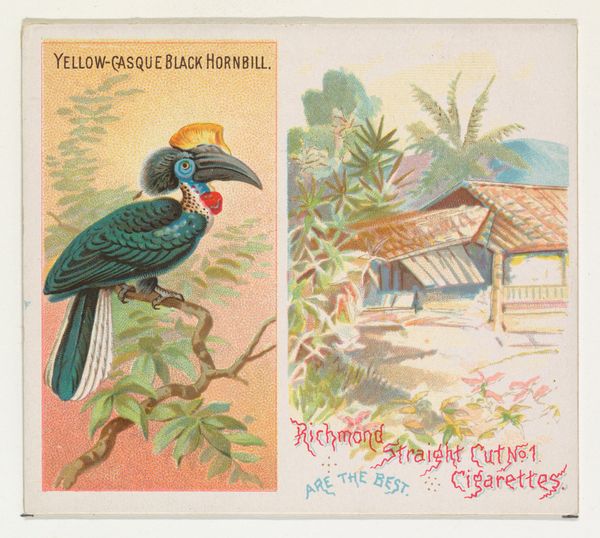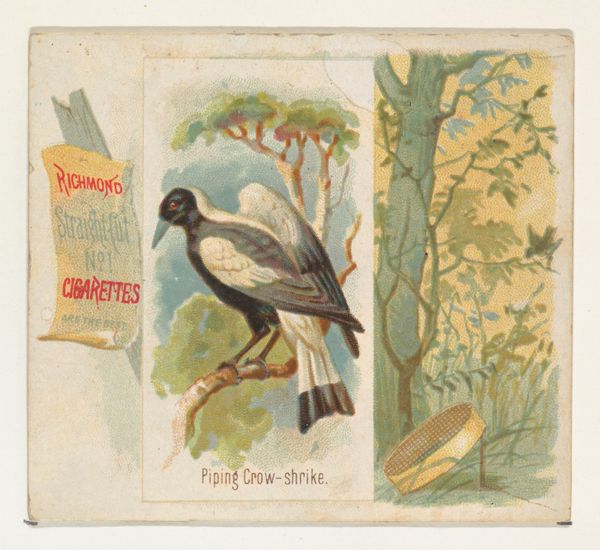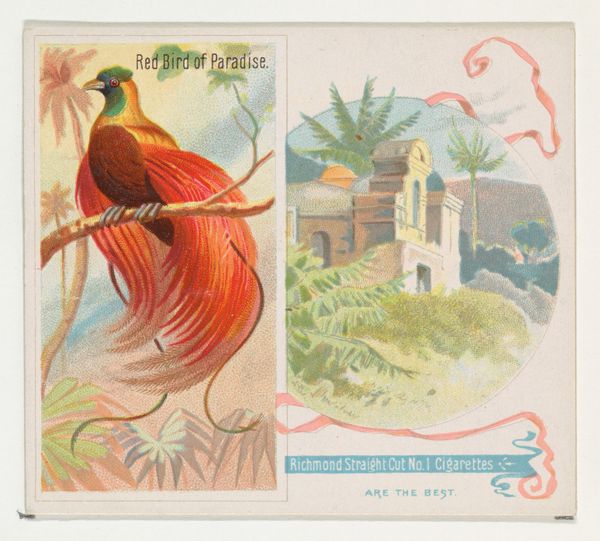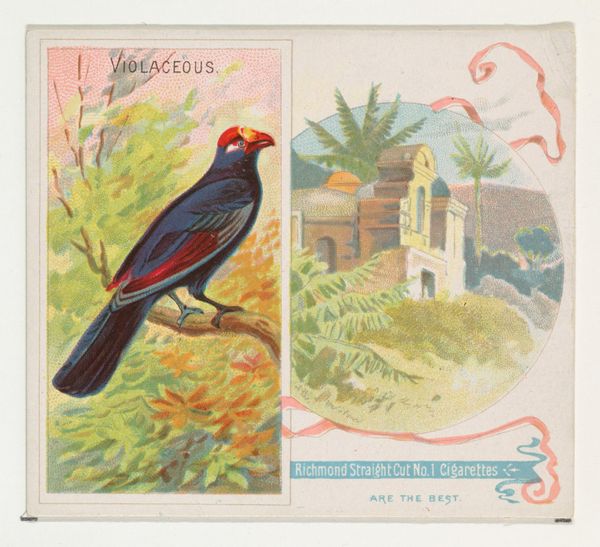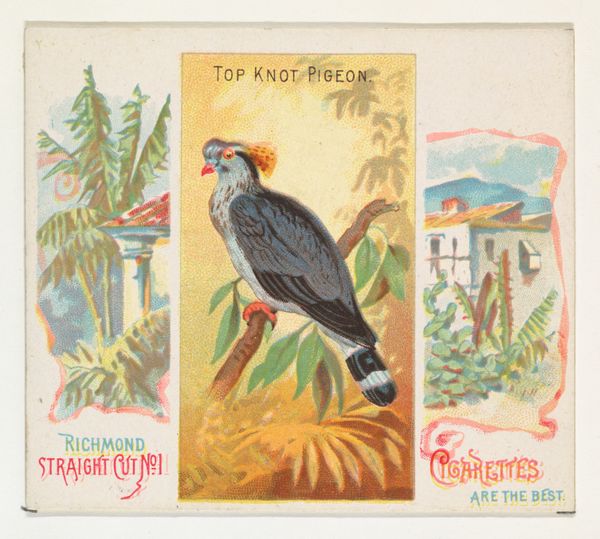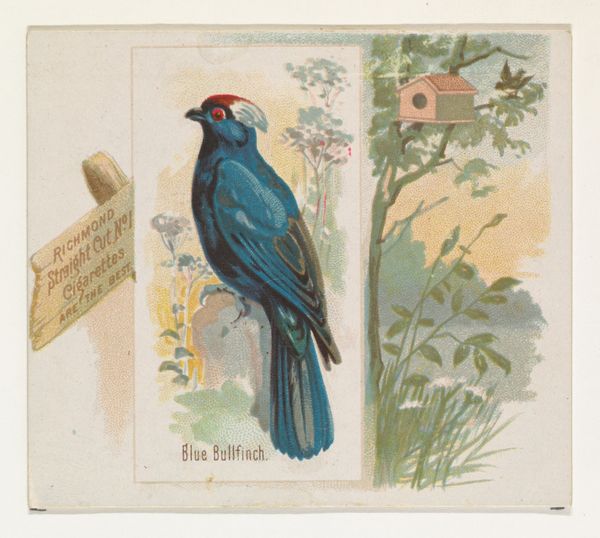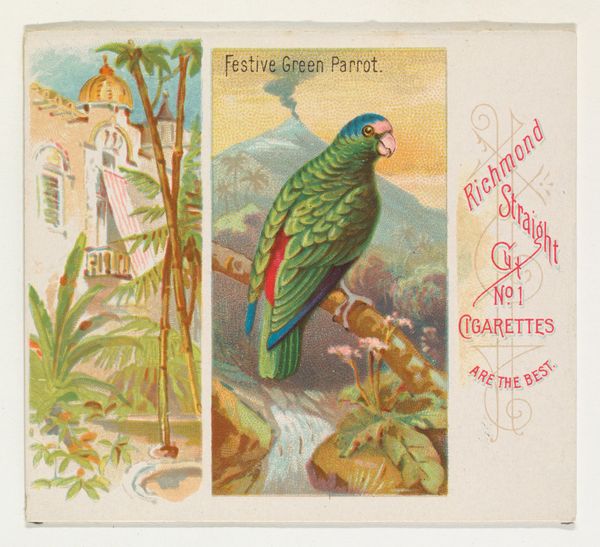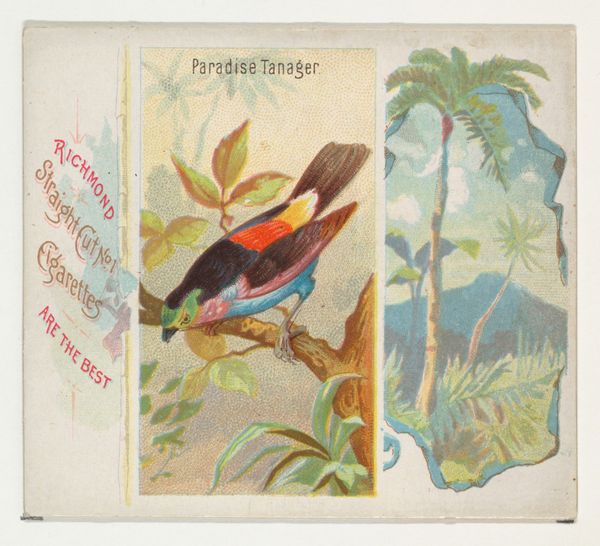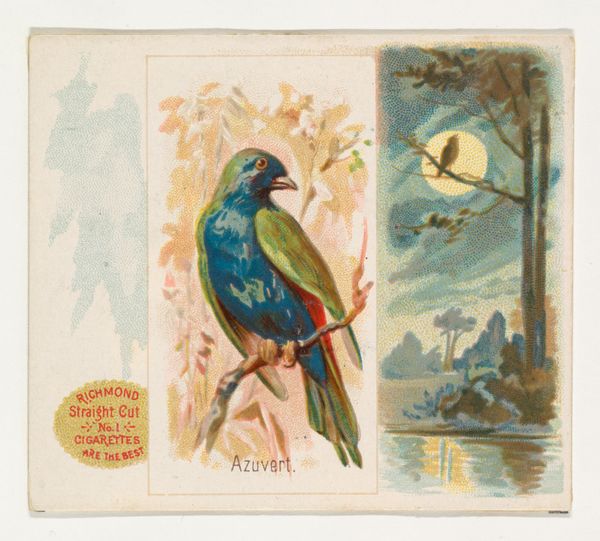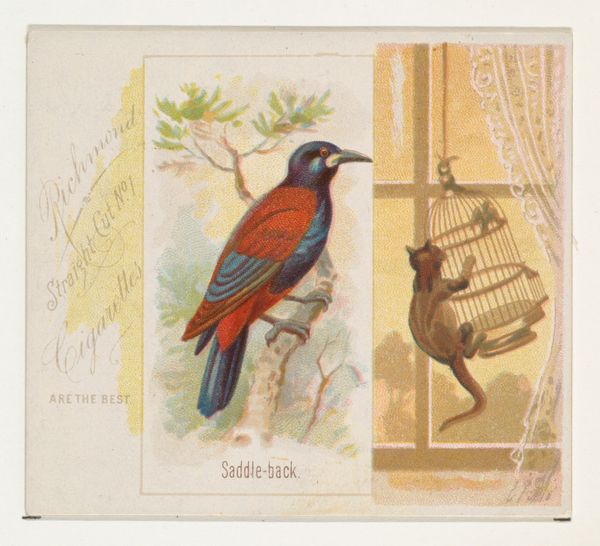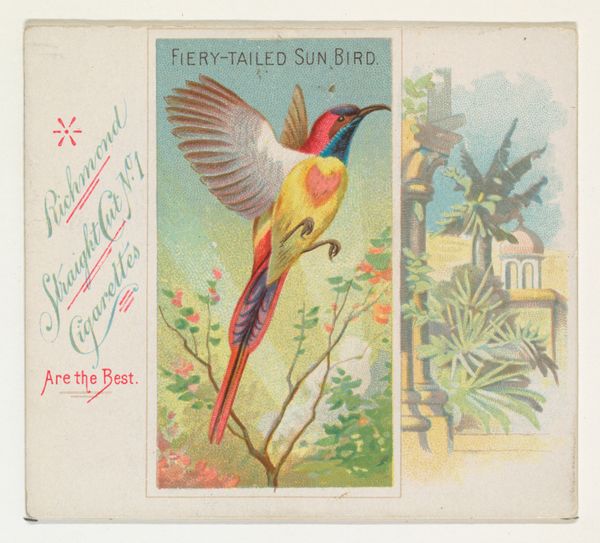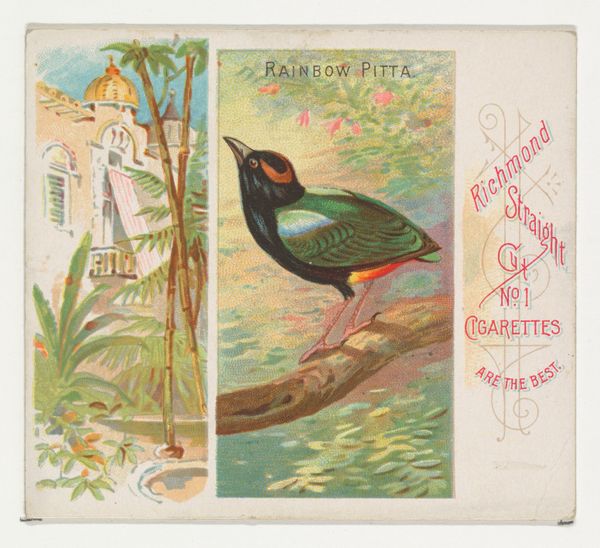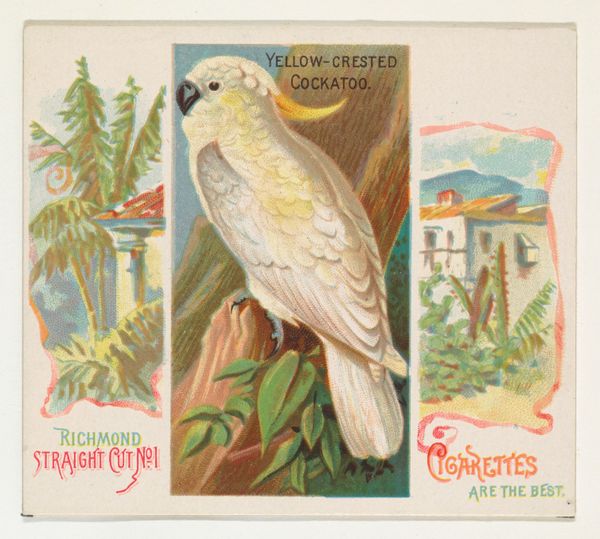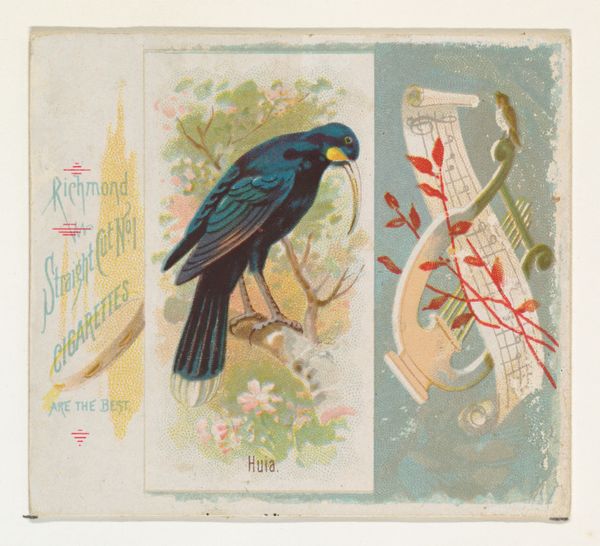
Satin Bower Bird, from Birds of the Tropics series (N38) for Allen & Ginter Cigarettes 1889
0:00
0:00
#
tropical
# print
#
figuration
#
naive art
Dimensions: Sheet: 2 7/8 x 3 1/4 in. (7.3 x 8.3 cm)
Copyright: Public Domain
Curator: This small, colorful print is titled "Satin Bower Bird, from Birds of the Tropics series (N38) for Allen & Ginter Cigarettes," created in 1889. It's a fascinating glimpse into how art was used in commercial advertising. Editor: The contrast between the jewel-toned bird and the almost dreamy landscape immediately grabs you, doesn't it? It’s such a vivid depiction; it feels almost like stepping into a lush, idealized version of the tropics. Curator: Exactly! These cards were inserts in cigarette packs, aimed at capturing a growing market and fostering brand loyalty. The imagery draws heavily on Orientalism, catering to Western fantasies about exotic locales. Allen & Ginter's sets like "Birds of the Tropics" showcased knowledge but also reinforced colonial perspectives. Editor: That context shifts how I see it. What seems like innocent naturalism is layered with power dynamics. The idealized, almost cartoonish depiction of the tropical setting seems to flatten and simplify a complex reality for consumption, mirroring the consumption of the cigarettes themselves. Who profits from this tropical fantasy, and at whose expense? Curator: Precisely. These cards functioned as educational tools, presenting different cultures and natural history to a broad public. They are prints and drawings employing vivid colors that reference Japanese prints. But we must critically analyze how that information was framed. The collecting craze was tied to ideas of possession—of knowledge and, by extension, of the places depicted. Editor: And what does it mean to collect images of birds, extracted from their homes and put onto small rectangles included with addictive substances? This object really encourages thinking about the relationship between commerce, colonial narratives, and the environment. Even a seemingly harmless bird is entangled in a complex web. Curator: It shows how deeply intertwined visual culture is with the social and political currents of its time. Advertising imagery provides critical evidence of this interplay between industry, aesthetics, and the public imagination. Editor: This little card becomes a starting point to explore broader questions about how we see, consume, and ultimately impact the world around us, underscoring that even something seemingly innocuous can carry weighty historical and ethical implications.
Comments
No comments
Be the first to comment and join the conversation on the ultimate creative platform.
